Biography
Sandra Day O'Connor
Our nation's first female Supreme Court justice and first female majority leader of any state senate, Justice O'Connor is a peerless trailblazer who has left a lasting impact on the history of the United States. Her legacy lives on through the Sandra Day O'Connor Institute, which she founded in 2009 to advance civil discourse, civic engagement, and civics education.

Fast Facts
-
- Born: March 26, 1930 in El Paso, Texas
- Parents: Harry Alfred ("D.A.") (1898-1984) and Ada Mae ("M.O.") Day (1904-1989)
- Siblings: Alan Day (1939- ), Ann Day (1938-2016)
- Education: Stanford University (BA Economics, 1950), Stanford Law School (LLB, 1952)
- Spouse: John Jay O'Connor III (1930-2009, married 1952)
- Children: Scott O'Connor (1957- ), Brian O'Connor (1960- ), Jay O'Connor (1962- )
- Nominated to Supreme Court by: President Ronald Reagan
- Sworn in: September 25, 1981
- Supreme Court service: 1981-2006
- Died: December 1, 2023 in Phoenix, Arizona
Learn more about Justice O'Connor in the Sandra Day O’Connor Digital Library and Resource Center, an ongoing program by the O’Connor Institute to document her storied life and accomplishments for current reference and posterity.
Sandra Day O'Connor made history in 1981 when she was sworn in by then Chief Justice Warren Burger as the first woman to serve on the United States Supreme Court in its 191-year history. Appointed by President Ronald Reagan, it was O'Connor's intelligence and grit that made her a transformational figure in the nation's highest court of law.
Beginnings
 Sandra Day O'Connor was born in El Paso, Texas on March 26, 1930. Her parents, Harry "D.A." and Ada Mae "M.O." Day, owned a cattle ranch in southeastern Arizona, the Lazy B, the largest and most successful ranch in the region. In the beginning, the remote ranch did not have electricity or running water. As a result, Sandra grew up becoming resourceful, including branding cattle and learning to fix whatever was broken, all the while enjoying life on the ranch.
Sandra Day O'Connor was born in El Paso, Texas on March 26, 1930. Her parents, Harry "D.A." and Ada Mae "M.O." Day, owned a cattle ranch in southeastern Arizona, the Lazy B, the largest and most successful ranch in the region. In the beginning, the remote ranch did not have electricity or running water. As a result, Sandra grew up becoming resourceful, including branding cattle and learning to fix whatever was broken, all the while enjoying life on the ranch. 
Her experiences on the Lazy B unequivocally helped shaped her character as she developed her belief in hard work, yet her parents also wanted O'Connor to gain a good education. Living in such a remote area, the school options were limited, and she had already shown that she was quite bright. By age four, she learned how to read. Exploring places and schools that would be the best match for O'Connor's abilities, her parents sent her to El Paso, Texas to live with her grandmother to attend school. In El Paso, young Sandra attended the Radford School for Girls followed by Austin High School. She spent her summers at the Lazy B and lived with her grandmother during the school year. A successful student, she graduated high school at the early age of sixteen.
Sandra Day O'Connor's father had aspired to attend Stanford University. However, after his father's death, D.A. had returned to the Lazy B at the request of the lawyers handling the estate. Sandra thus aimed to live out D.A.'s dream. After graduating from high school in 1946, she applied to Stanford University despite the probability that she might not be accepted because she was a woman. Competing against many other applicants, she was accepted.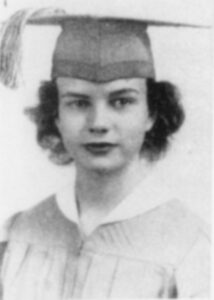
Sandra excelled and became Senior Class President at Stanford. In a program in which she finished two degrees in just six years instead of seven, she graduated in 1950 with a bachelor's degree in economics and received her law degree in 1952. While in law school, she was a member of the board of editors for the Stanford Law Review, a very high honor for a law student. Upon graduation, she was at the top of her class, graduating third out of 102 students. O'Connor was just two places behind a fellow law student and friend who went on to become Supreme Court justice, William H. Rehnquist (1924-2005).
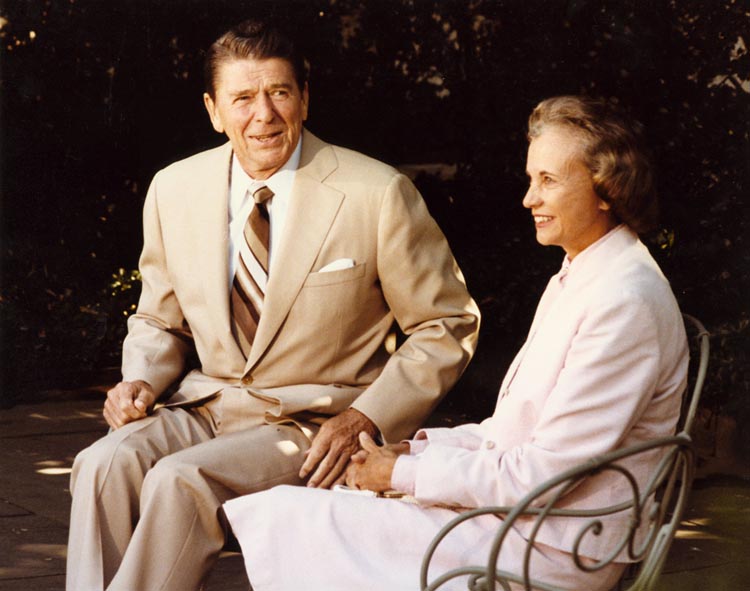
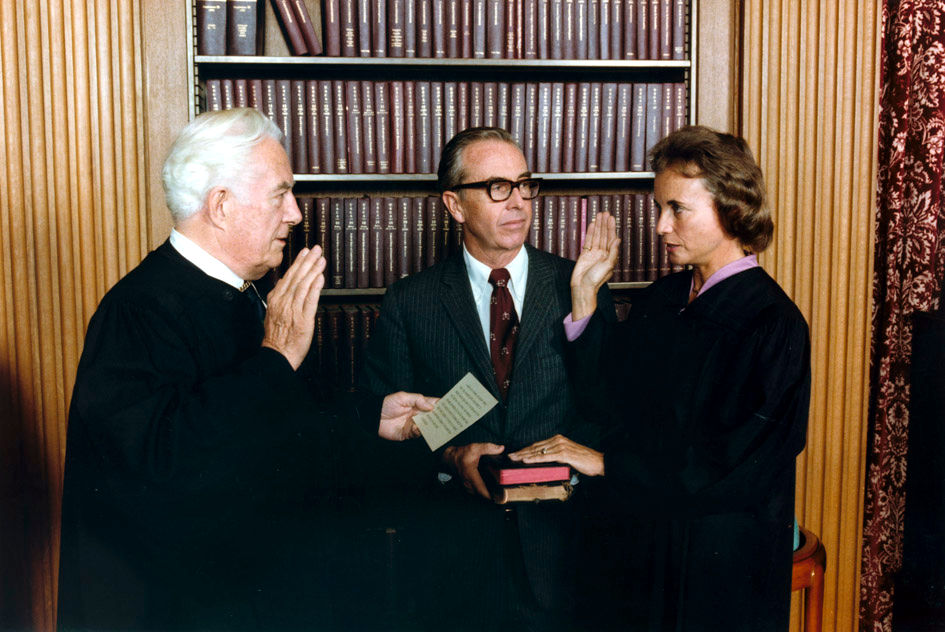
Timeline
-
- 1930: Born in El Paso, Texas on March 26
- 1946: Graduates from Austin High School in El Paso at age 16
- 1950: Receives bachelor's degree in economics from Stanford
- 1952: Receives law degree from Stanford, marries classmate John Jay O'Connor III
- 1952-1957: Works as attorney in San Mateo, CA and Germany
- 1957-1962: Moves to Phoenix, AZ, three sons are born
- 1965: Becomes an Arizona Assistant Attorney General
- 1969: Appointed to Arizona State Senate
- 1972: Chosen by colleagues as Arizona State Senate Majority Leader
- 1974: Elected Maricopa County Superior Court judge
- 1979: Appointed to Arizona Court of Appeals
- 1981: Nominated and confirmed to United States Supreme Court
- 2006: Retires from Supreme Court
- 2009: Founds Sandra Day O'Connor Institute for American Democracy
- 2023: Died in Phoenix, Arizona on December 1
Lawyer, Legislator, and Judge
After graduating from law school, O'Connor busily went about applying to law firms in San Francisco and Los Angeles, but because of the prejudices against women at that time, she could not get a job as a lawyer. She was offered a position as a legal secretary, which did not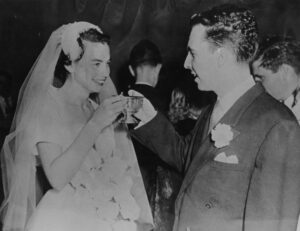 match her education and training. Instead, she took a position as a deputy county attorney in San Mateo, California, initially offering to work for no salary or office, and where she shared space with a secretary. During this time, she also married John O'Connor, who was one class behind her at Stanford. Upon his completion of law school, the couple moved to Germany, where he served as an attorney in the U.S. Army. She then worked as a civilian attorney, specializing in contracts.
match her education and training. Instead, she took a position as a deputy county attorney in San Mateo, California, initially offering to work for no salary or office, and where she shared space with a secretary. During this time, she also married John O'Connor, who was one class behind her at Stanford. Upon his completion of law school, the couple moved to Germany, where he served as an attorney in the U.S. Army. She then worked as a civilian attorney, specializing in contracts.
Upon their return to the United States, the O'Connors settled in the Phoenix, Arizona, area. O'Connor and another lawyer opened a law office in suburban Maryvale; but for the next few years she devoted most of her time to raising her three sons, who were born between 1957 and 1962. She also joined many groups becoming a volunteer to improve her community, and where O'Connor began to take an active role in local politics.
In 1965, O'Connor returned to full-time employment as one of Arizona's assistant attorneys general, to assist the chief law officer in the state. In 1969, the state senator from her legislative district resigned, leading Governor Jack Williams (1909-1998) to appoint O'Connor to replace the vacant seat. When the position next became open for election in 1970, O'Connor won it and was easily reelected in 1972. She was chosen as the Republican majority leader by her colleagues in in the state senate in 1972, the first woman in the country to hold that position.
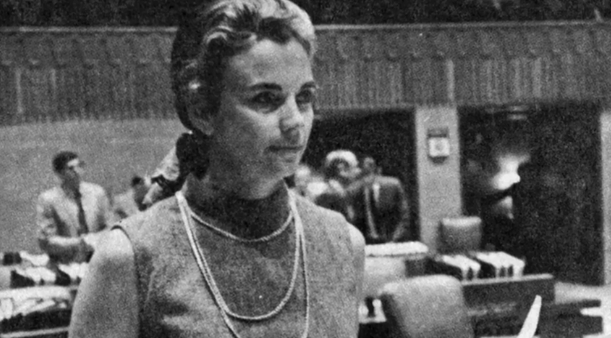
In 1974, O'Connor chose to leave the state senate and legislature to enter the judicial branch of government, becoming a county judge in the Maricopa County Superior Court. In 1979 Bruce Babbitt (1938-), the governor of Arizona, elevated her with an appointment to the Arizona Court of Appeals. O'Connor became a founder of both the Arizona Women Lawyers Association and the National Association of Women Judges.
Making History
During the final month of the 1980 presidential campaign, candidate Ronald Reagan (1911-2004) needed more support from female voters. He stated that if he were elected, he would appoint a woman to the  U.S. Supreme Court. In July 1981, President Reagan kept his promise and nominated Sandra Day O'Connor. The Senate quickly confirmed her 99-0, with only the absent Senator Max Baucus not able to participate in the historic vote. Thus, Sandra Day O'Connor became the first female justice in the 191-year history of the Supreme Court. At the time she was nominated by President, she became the first person appointed to the nation's court in 24 years who had state court experience and the first justice in 32 years with lawmaking experience having served in a state legislature.
U.S. Supreme Court. In July 1981, President Reagan kept his promise and nominated Sandra Day O'Connor. The Senate quickly confirmed her 99-0, with only the absent Senator Max Baucus not able to participate in the historic vote. Thus, Sandra Day O'Connor became the first female justice in the 191-year history of the Supreme Court. At the time she was nominated by President, she became the first person appointed to the nation's court in 24 years who had state court experience and the first justice in 32 years with lawmaking experience having served in a state legislature.
During her remarkable Supreme Court tenure which spanned nearly a quarter century, O'Connor played a crucial role in many key decisions, and was highly regarded an independent thinker and a leader on the court.
During the commencement speech she gave at Stanford in 2004, she reflected on her appointment by President Reagan:
"His decision was as much a surprise to me as it was to the nation as a whole. But Ronald Reagan knew that his decision wasn't about Sandra Day O'Connor; it was about women everywhere. It was about a nation that was on its way to bridging a chasm between genders that had divided us for too long."
O'Connor retired on January 31, 2006. Reflecting the trailblazing nature of her career, only 2 percent of law students were women at the time she attended in the 1950s. By the time she retired in 2006, that percentage had risen to 48 percent.
Founded in 2009 by retired Supreme Court Justice Sandra Day O'Connor, the O'Connor Institute, a nonprofit, nonpartisan 501(c)(3), continues her distinguished legacy and lifetime work to advance American democracy through multigenerational civil discourse, civic engagement and civics education.
